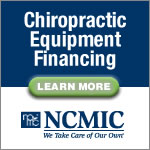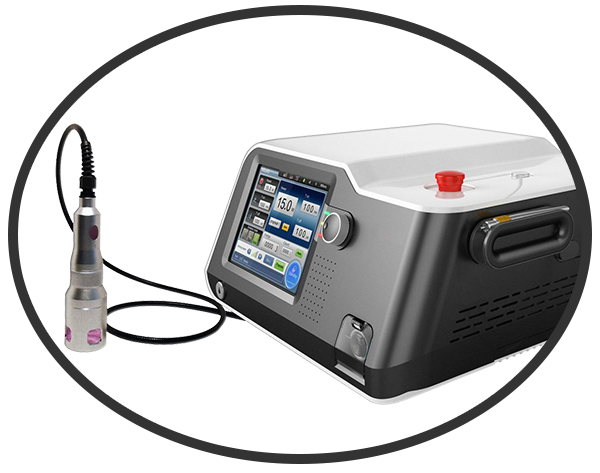Frequently Asked Questions and Answers
How Long Has Laser Been In Use?
Over 30 years have passed since the first reports appeared on the biological effects of non-thermal laser light. Research efforts have matured both qualitatively and quantitatively. The question is no longer whether or not therapeutic lasers have biological effects, but rather how they work and what’s the best way to use them. Therapeutic lasers have a tremendous and as yet untapped potential in the field of healthcare. It is now clear that therapeutic lasers have no undesirable effects in the hands of a reasonably qualified therapist. A deeper knowledge of laser medicine will only continue to yield better clinical results. (Turner & Hode, forward)
How Far Does The Laser Penetrate?
Depth of penetration is totally independent of the laser’s output. Laser therapy achieves direct biological effects at depths of 1-4 cm in the tissue, depending upon the type of laser used (red-light or IR) Systemic effects are accomplished by circulation of the blood and other forms of communication in the tissue, such as transport of transmitters or signal substances occurring at much deeper levels throughout the entire body (Turner & Hode, 344).
Is this type of laser dangerous?
Absolutely NOT. This is a “COLD” laser meaning that it does not “cut” or “burn”. Most patients don’t feel anything at all when the laser is being applied.
“Low Level Laser Therapy is considered safe, effective and side effect free making an ideal adjunctive therapeutic modality for intractable chronic pain.”
(Shigeyuki Nakaji et al — pub. Photomedicine and laser surgery vol. 23 num. 1, 2005)
Is the RenuvaLaze Safe?
There are over 1,700 published studies and not one of them mentions any negative side effects of Low Level Laser Therapy. Cold lasers are safe, non-toxic and non-invasive. There has not been a single recorded side effect!
“Low Level Laser Therapy (Photomedicine) is considered safe, effective and side effect free making an ideal adjunctive therapeutic modality for intractable chronic pain.”
(Shigeyuki Nakaji et al — pub. Photomedicine and laser surgery vol. 23 num. 1, 2005)
Does Laser Really Work?
Over 1700 clinical studies couldn’t be wrong!
The Lancet review states, “There is now more evidence for the use of laser for neck pain than any other medical procedure.”
“.... significantly reduces pain and improves health status in chronic joint disorders.”
(Bjordal JM et al — pub. Aust J Physiother 2003;49(2):107-16)
Is LED technology the Same as Laser?
Absolutely NOT!!! Not all light is the same and or has equal medical benefit. Much controversy has arisen over the comparison of true laser light in low power therapy as contrasted with LED (Light Emitting Diodes).
It is very important that the distinctions between the two and their completely different biological effects be accurately portrayed. Today there are a number of devices and therapies available that use LEDs and Super Luminescent LEDs as the light emitting components for their therapies. Some of these are even advertised and promoted as lasers, which they are not.
Of the thousands of referenced and reported clinical and scientific studies and papers available, they are almost exclusively done with laser light sources as the medically beneficial light source. In fact, even on the web sites of the leading LED light devices, the sources and references they list “are not” for LED therapy, but rather for laser light therapy and they primarily use laser light studies as their medical efficacy support.
A number of studies have been completed that compared the effectiveness of laser light to LED light and the majority have found laser light to be far more effective, particularly in treating tissue of any significant depth. While LED light therapy does have some beneficial effect, it may be limited to superficial tissue treatment only.
The authors of the leading and most widely used laser therapy textbooks are unanimous in their opinion that there are significant differences between laser light and LED light and their respective biostimulative effects are far from being equal.
Most healthcare practitioners and researchers would agree that laser light (LLLT) can achieve much greater and deeper stimulative and therapeutically beneficial effects.
(Turner & Hode, Laser Therapy).
We have not yet found one single study as of date indicating that non-coherent light (LED) is as efficient as coherent light.
International laser experts and researchers agree that in comparison, laser light therapy is far superior to LED therapy.
So with most research and clinicians agreeing that true Laser is superior to LED then why would companies continue to use LED? Simply, the cost. LED’s are much cheaper than Laser. However don’t be fooled by imitations. Your results may NOT be the same.
Are some lasers better than others?
Yes. As we mentioned above TRUE Laser has been shown to be more effective than LED. A True laser will have the following characteristics:
- Single wavelength: the shorter the wavelength, the greater the purity of light.
- Coherent — the light is not scattered and all the light is brought to a single point.
- Collimated — there is minimal divergence of the laser beam throughout the distance of the beam.
- Are based on researched frequencies, wavelengths, and treatment times
What are More Possible Benefits of Low Level Laser Therapy?
- A reduction of pain by the body’s production of endorphins (natural pain killers)
- The reduction of inflammation
- The halting of a tissue’s influx of fluids
- The disappearance of swelling, redness, and heat
- The reduction and elimination of pain
- An elevation of lymphatic drainage
- An increase of blood circulation
- An increased flow of healing enzymes up to 75% into a traumatized area
- The reduction of spasms in tight muscles (both smooth and striated) which had been creating chronic pain, joint stiffness, and decreased mobility
- The speeding up of bone repair
- Quickly increases Range of Motion
- Increases the once-damaged tissues ability to handle additional stress
- The canceling wave effect of viruses, fungi, bacteria, and a variety of parasites so that they fail to survive as pathological organisms
Since the biostimulative, regenerative, anti-inflammatory, and analgesic characteristics of low level laser therapy began during the past half-century, a massive number of laboratory and clinical studies have been conducted. More than 1,700 published pieces have appeared in the medical literature, demonstrating to the effectiveness of LLLT.
How Does Low Level Laser Therapy Work
Photons from the laser function at the cellular level by entering the tissue, altering or restructuring the cell membrane permeability and allowing more optimum cell-to-cell communication. One of the most well understood applications is the activation of the cellular mitochondria.
The Mitochondria of the cell is also known as the “Powerhouse of the cell”. Mitochondria convert glucose into ATP, the fuel for cells. Light photons convert ADP to ATP where it is transferred to the peripheral cytoskeleton and stored for future use. The peripheral cytoskeleton lies just inside the membrane that is activated by frequency based technology. Cells can function without the membrane with holes in the membrane, and even without a nucleus, but they cannot function without a peripheral cytoskeleton.
Only a few low level lasers such have the capability of programming specific pulsations (hertz), which have been shown to create different physiological responses of the cell such as activation of the peripheral cytoskeleton of the mitochondria. This is extremely important when working with a variety of injury and disease conditions to promote healing. The metabolism of injured and diseased tissue is decreased and the laser creates an increase in metabolism and cell communication immediately.
Benefits of Laser Therapy as a Function of increased ATP:
- Anti-Inflammatory — Laser reduces swelling caused by bruising or inflammation of joints to give improved joint mobility.
- Reduced Scar/Fibrotic Tissue — Laser reduces the formation of fibrotic tissue following tissue damage by activating key cellular components to enhance healing.
- Stimulates Nerve Function — Slow recovery of nerve function in damaged tissue can result in “dead” limbs or numb areas. Laser will speed the process of nerve cell reconnection to bring the limb numb areas back to life. Laser also increases the amplitude of action potentials to optimize muscle action.
- Rapid Cell Growth — Laser accelerates cellular reproduction and growth.
- Increases Metabolic Activity — Laser helps the body increase output of specific enzymes, greater oxygen to blood cells and more effective immune response.
- Increases Vascular Function — Laser stimulates lymph and blood circulation, to allow the affected tissue to have the best possible circulation.
- Faster Wound Healing — Laser stimulates fibroblast development in damaged tissue.
- Re-set muscles back to normal function.
These potential physiological changes affect macrophages, fibroblasts, endothelial cells, mast cells, bradykinin, nerve conduction rates and the energy communication pathways throughout the fascial network of the human body. The energy transferred to the cell can increase its kinetic energy and activate or deactivate enzymes, or alter physical or chemical properties of macromolecules.
Two-year End-to-End Warranty
You will sleep like a baby knowing that your RenuvaLaze is covered end to end for both parts and warranty.

Best Price Guarantee
With our low price guarantee you will get one of the world‘s most effective lasers without having to pay an arm and a leg. This will allow you to get a solid return on your investment. That’s why this laser has been called “the best laser for your money”.
Financing Options
Qualified applicants can also receive the following:
- NO payments for 90 days
- 100% financing—equipment, shipping, taxes and more
- Approvals in less than 24 hours
- Low payments, upfront terms
Apply in less than 20 minutes at one of our Trusted Financing Firms

NCMIC |

Partners Capital |

Still Have Questions? No Problem!
Simply give us a call or drop us a line at support@decompressionpros.com.
(877) 775-4463

